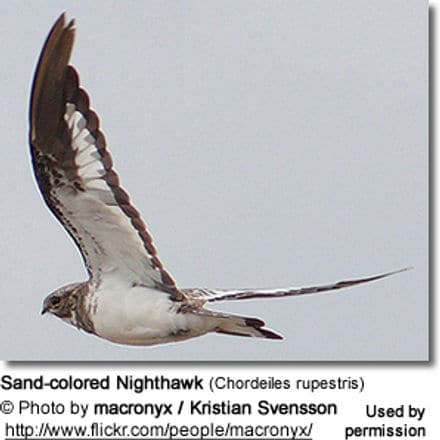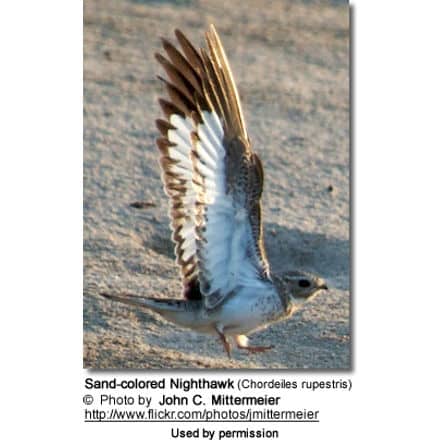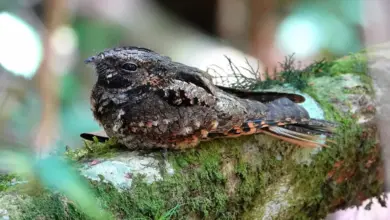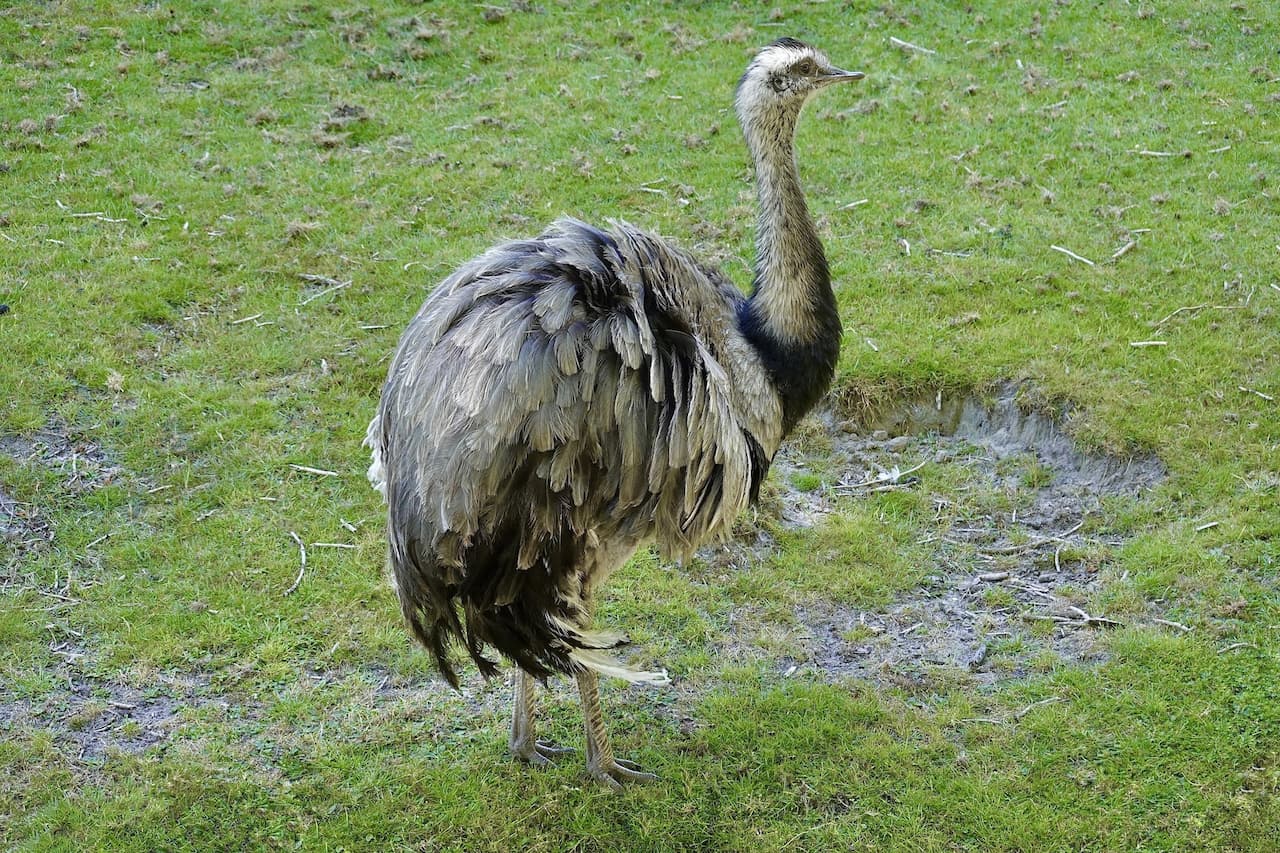Sand-colored Nighthawk
The Sand-colored Nighthawk (Chordeiles rupestris) – also known as the White-throated Nightjar – is a South American nightjar.
In the past, night-flying birds – such as the nightjars – were suspected of witchery.
Unlike other nightjars which are less often seen due to their mostly nocturnal (active-at-night) habits, the Sand-colored Nighthawk is frequently active during the day and is often seen in large flocks. However, their sand-colored, mottled plumages keep them well camouflaged during the day.
Alternate (Global) Names
Chinese: ???? … Czech: lelek pískobarvý, Lelek skalní … Danish: Sandfarvet Nathøg … Dutch: Zandkleurige Nachtzwaluw … German: Flußnachtschwalbe, Sandnachtschwalbe … Estonian: leete-videvikusorr … Finnish: Särkkäkehrääjä … French: Engoulevent sable … Italian: Caprimulgo-sparviero color sabbia, Succiacapre sabbia … Japanese: sunairoamerikayotaka … Norwegian: Sandnatthauk … Polish: lelczyk blady … Portuguese: bacurau-branco, Bacurau-da-praia, bacurau-de-bando … Russian: ???????? ?????????? ??????? … Slovak: súmracník pieskový … Spanish: Añapero Blanco, Chotacabras Pechiblanco, Pucuyo menor … Swedish: Klippfalknattskärra
Distribution
The Sand-colored NIghtjar are distributed throughout the Amazon basin, which is located in the South American countries of Bolivia, Brazil, Colombia, Ecuador, Peru and Venezuela
They are found near marshes and on rocky islands, sand bars and sandy beaches on Amazonian rivers, subtropical and tropical moist wetlands, marshes, shrubland and heavily degraded former forests.
Recognized Subspecies and Ranges
- Chordeiles rupestris rupestris (Spix, 1825) – Nominate Race
- Range: Northeastern Ecuador, northeastern Peru, Southeastern Colombia and southern Venezuela east through north and central Brazil and south to central Bolivia.
- Chordeiles rupestris xyostictus (Oberholser, 1914)
- Range: Central Colombia.
Description
They are medium-sized nocturnal birds with long pointed wings and very short bills. They have short legs and small feet, of little use for walking. Their soft plumage is cryptically colored to resemble bark or leaves.
They can be identified by their white underwings and the dark / blackish outer wing feathers (primaries) with a trailing edge.
Their cryptic appearance blends perfectly into their habitat. Their presence is most often made known by their loud calls made at dusk or when out foraging in flocks.
Nesting / Breeding
The male establishes his territory and sings at night to keep rivals away and at the same time to attract a female.
Sand-colored Nighthawk don’t actually construct a nest, as most other bird species do. They simply place the eggs on the ground on open soil covered with dead leaves.
Nesting appears to be timed in such a way that the moon is more than half full at the time they are feeding their young – likely as the additional light during the night facilitates caring for the young and foraging for food.
The female may lay one to two eggs (mostly two) that are whitish or creamy in color, with brown and grey spots or blotches.
During the day, the incubation of the eggs is undertaken by the female, while both parents share the incubation at night. The incubation period is about 19 to 21 days at which time the hatchlings emerge covered in down. They are capable of short-distance movements within 24 hours of hatching. The male stands guard and defends the nest and the chicks. The adults communicate with their offspring via soft clucking sounds to which the chicks respond.
Both parents feed their young regurgitated insects, and they continue to brood them until fledging. The chicks take their first flight when they are about 20 to 21 days old.
If conditions are favorable, the female may lay a second clutch close to the first and while she is incubating the new set of eggs, the male continues to care for the young from first brood.
They have developed several behavioral adaptations to minimize predation:
- Their nocturnal (night) lifestyle reduces the likelihood of being detected by daytime predators. During the daytime, they typically sleep on the ground where they are perfectly camouflaged by their “earthy” colored plumage. They almost always change their roost sites on a daily basis.
- When nesting, they sit quietly on the eggs, minimizing any movements that could get them detected.
- If an intruder does get close to the nest, the parents may try to lead them away by first flushing off the nest and when landing feigning injury as they lead the potential thread away from the nest. While the parent performs this distraction display, the young may scatter and freeze.
- The parent who is not incubating the eggs or brooding the young will roost away from the nesting area.
- They may also move the eggs or young to prevent them from being preyed upon.
- Nightjars avoid voicing when they hear the calls made by predatory nocturnal animals, such as owls.





